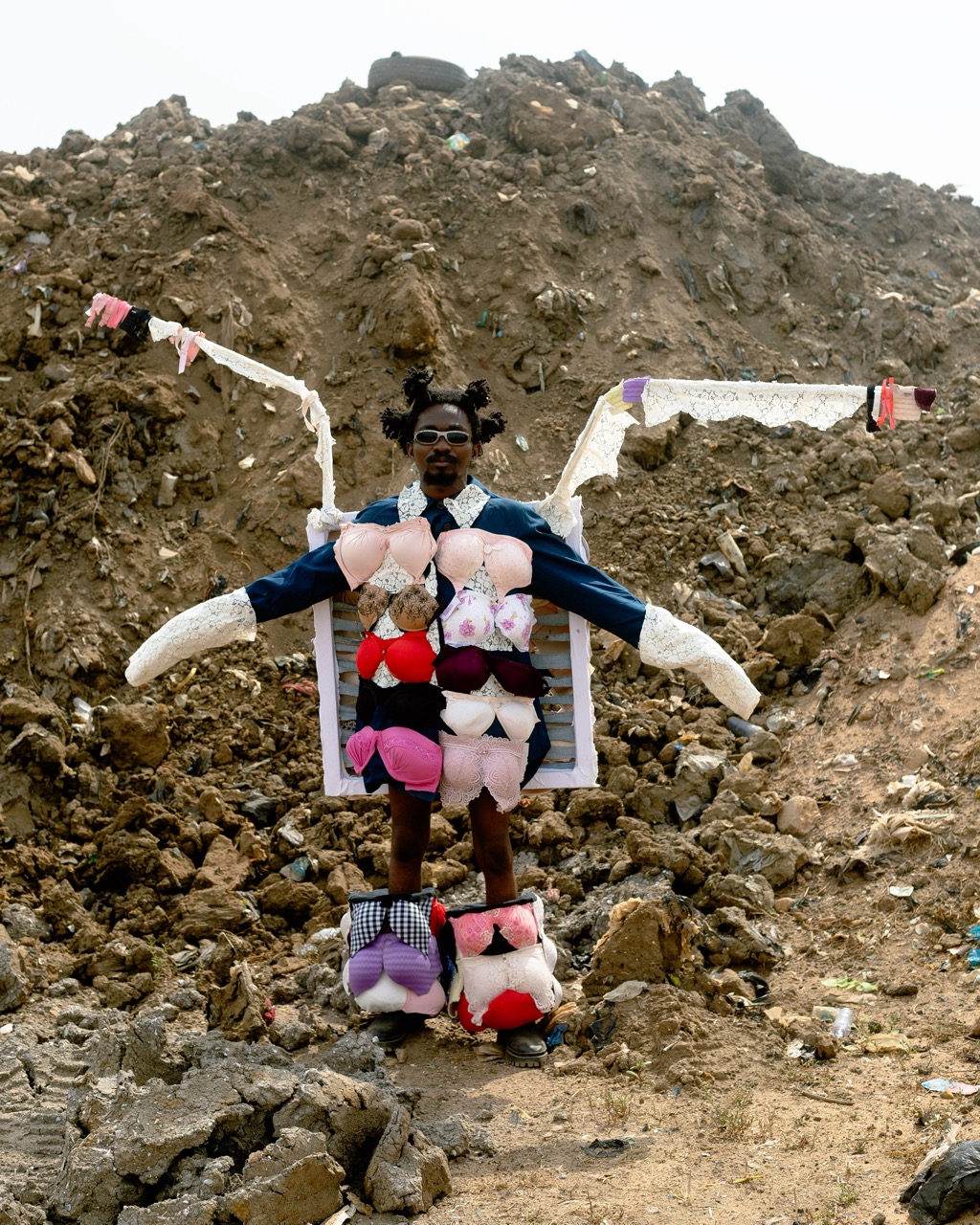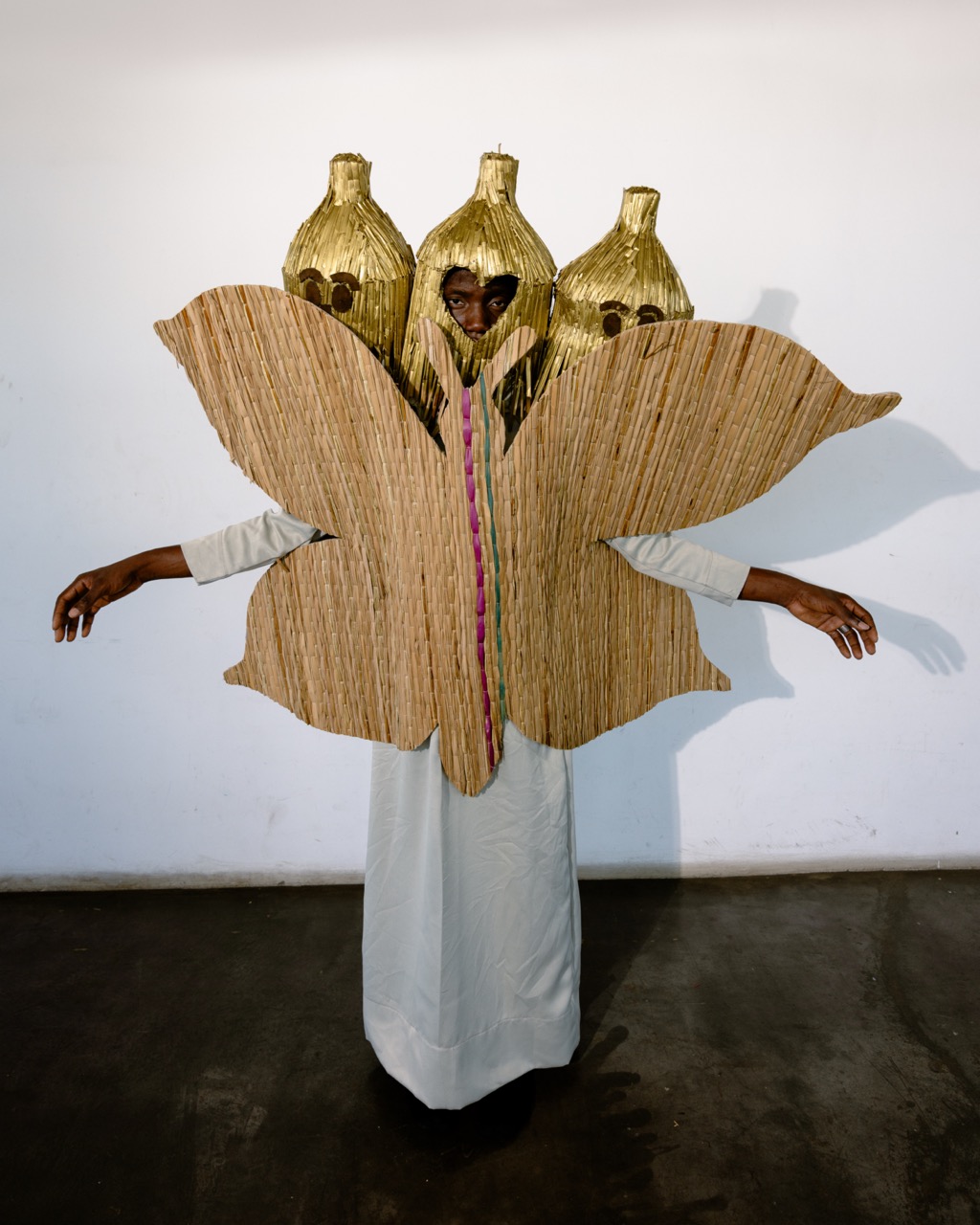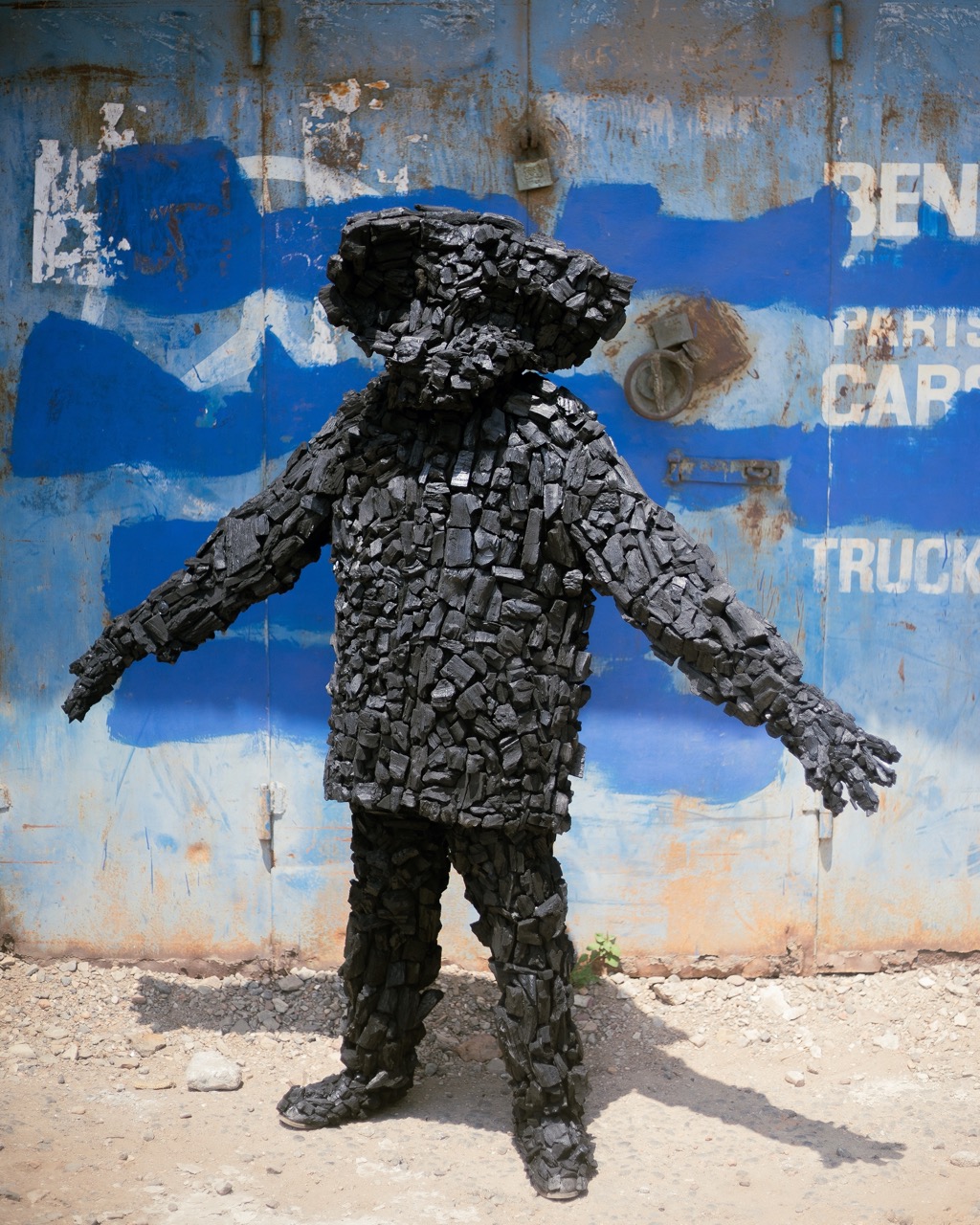Oldy Blaq is a proverbial enigma in that for this artist, there doesn’t seem to be an earnestness to go back into the past or step into the future, on the contrary, there’s merely a contentment with breathing in the present. More often than not, this intrinsic contemplativeness is a profound facet that spontaneously reflects itself through their work. Especially with their latest project that looks as if it speaks to the conceptualisations of tragedy and temerity that they continue to address (more on this later). For now, the artist has kicked things off by speaking to Bubblegum about everything from artistic modus operandis to individual philosophies.

OLDY BLAQ, it’s a pleasure to speak with you for Bubblegum Club Magazine. I’d like to begin by asking about your practice, how you believe it answers to the continents creative space and where it differentiates itself?
Our practice is rooted in Sustainability. Sustainable fashion in Ghana answers South Africa’s creative space through Cultural Engagement, however, Ghana’s second-hand clothing market inspires more upcycling and repurposing, when juxtaposing with South Africa’s second-hand clothing market.
Your Instagram feed is populated with various media, which I definitely want to scroll through with you later on in our conversation. But, for now, I’d like to ask whether there is support that the digital, social element of your work provides to the material, physical elements.
The digital and social aspects of our work has provided significant support, materially and has driven foot traffic to our physical space, thus, increasing Visibility and creating awareness of our work globally.

How does photography inform your videography oriented projects and vice versa?
I am inspired by love and guided by wisdom.
Now that our conversation is heading in the direction of mindsets and personal beliefs, I am particularly drawn to the intention behind the one you express here, where you said, “you are a human being, not a human becoming. In being, there is no end. In becoming, there is an end, there is a disintegration. As long as you are trying to become, you are looking too closely at the form and you are quite literally moving away from the essence itself. “
I’d like to build on this, particularly by asking you how you believe art is a form of becoming that encourages observers to be? Where does your individual practice take this philosophy into itself and in which significant ways have acted upon it through your more contemporary projects?
That is not a philosophy. I do not have a philosophy or belief. I only have clarity. And why does one need to have a mindset in this flexible life? Life is flexible, one doesn’t need a mindset!

Motos and personal beliefs are a common characteristic within your work, one of your latest postings on the 4th of October had a carousel of imagery, and then, also another extensive piece of text written alongside it that read; “until you have truly suffered, there would be no humility, no compassion, there would be no profoundness, no depth to you as a human being. If you can give full attention to suffering, then you will find out what it is to sympathise, to have pity, to love, to share, to live in harmony with fellow beings not just humans. “ When do you believe personal mantras and philosophies become communal, is art more capable of facilitating this than people first believe?
In the material world, you need to have a philosophy or knowledge or personal beliefs to operate but life does not operate in beliefs or philosophies. Life operates in clarity. Philosophies or beliefs operate within the field of the mind, clarity goes beyond that and that is life.
Whilst we’re on this, walk me through this latest project of yours. Where has it come from and where is it going, both within your practice and the broader cultural, political and social encounters you’ve had.
We are already light, we need darkness to shine. This project is created from darkness but reflects love. We envision a day where oldyblaq would be widely understood and we do not need to mention it because it has melded with our lives.
How did the design in the project, particularly from a material standpoint, build open this. Was there anything in particular that catalysed the garment’s texture, colour and silhouette?
Everything was built upon upcycling. Being aware of the mind and the language of any material enhances its texture and colour representation. And when a design moves in a particular silhouette, I feel very happy!





















































